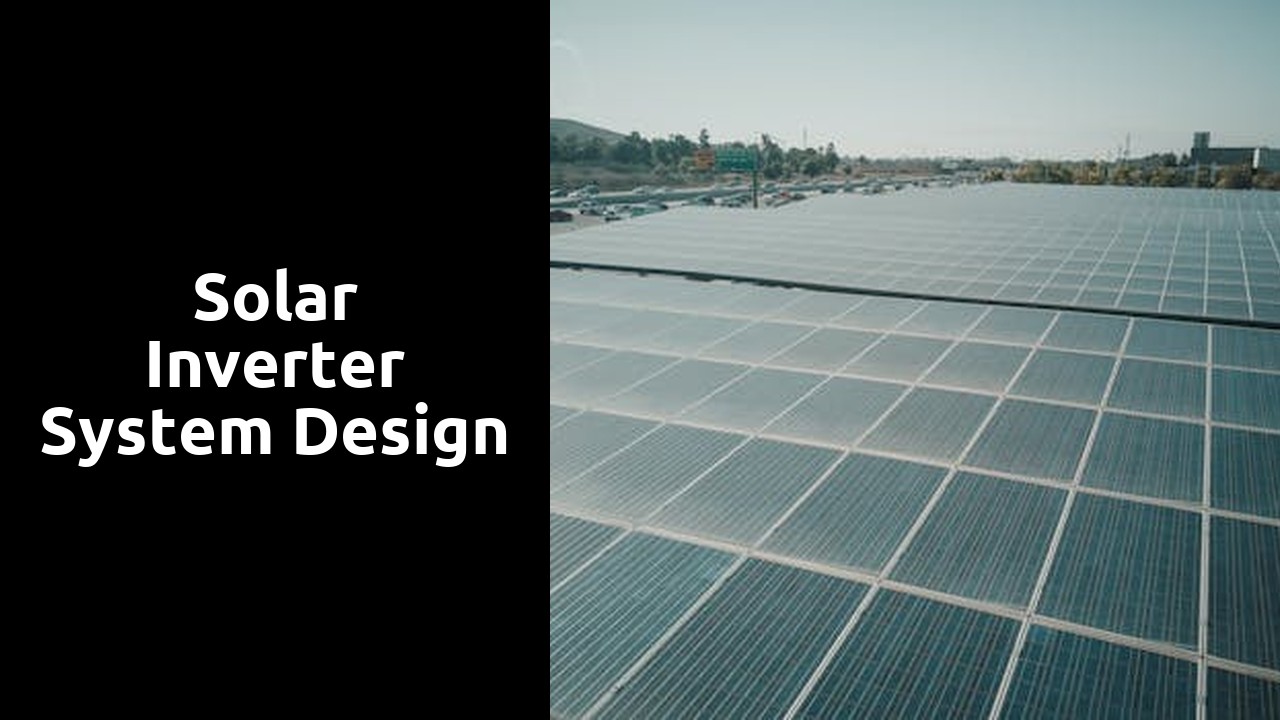 Can I clean my solar panels with just water?
Can I clean my solar panels with just water?What should I do with old solar panels?
How can I enhance the aesthetics of my solar panels?
Solar Flare Renewables offers top-notch solar panel maintenance services to ensure maximum efficiency and longevity of your system. Our team of skilled technicians are experts at inspecting, cleaning, and repairing solar panels to keep them performing at their best. We take pride in our proactive approach to maintenance, identifying any potential issues before they become costly problems. With Solar Flare Renewables, you can rest assured knowing that your solar panels are in good hands and will continue to power your home or business for years to come.
Role of AI in Streamlining Solar Audit Processes
FAQS
What is a solar energy audit?
ion of battery storage with solar inverters represents a pivotal step towards achieving greater energy autonomy and sustainability for individuals and communities alike.
Benefits of Solar Plus Storage SystemsWhy is it important to regularly monitor and maintain solar systems?
When it comes to solar power systems, incorporating battery storage can significantly enhance the efficiency and reliability of the setup. The integration of solar panels with storage units allows for the excess energy generated during the day to be stored for later use, especially during periods of low sunlight or at night. This ensures a more consistent and continuous power supply, reducing reliance on the grid and lowering electricity bills over time.
Moreover, solar plus storage systems offer increased energy autonomy and resilience, providing homeowners and businesses with a reliable backup power source during grid outages or emergencies. This is especially beneficial in remote areas or regions prone to power disruptions, as the stored energy can be utilized to maintain essential appliances and services. By harnessing the combined power of solar energy generation and battery storage, individuals can enjoy greater energy independence and environmental sustainability.What is the significance of regular solar energy audits?
Regulations and Standards for Solar Inverter Installations
Regulations and standards play a crucial role in ensuring the safe and efficient installation of solar inverter systems. In Australia, installations must comply with the Clean Energy Council guidelines to guarantee the high quality and performance of the system. These guidelines cover various aspects such as the design, installation, and maintenance of solar inverters to promote safety and reliability.What are some new technologies in solar auditing?
Moreover, Australian regulations mandate that solar inverter installations adhere to specific standards to minimize the risk of malfunctions and ensure the longevity of the system. By following these regulations, installers can enhance the overall performance of the solar inverter system and mitigate any potential safety hazards. Compliance with these standards is essential not only for the functionality of the system but also for the protection of both the property and individuals involved in the installation process.
Compliance with Australian Clean Energy Council GuidelinesHow does AI streamline solar audit processes?
Ensuring compliance with the Australian Clean Energy Council (CEC) guidelines is crucial for proper installation and operation of solar inverter systems. These guidelines are designed to uphold safety standards, promote efficiency, and protect the environment. Installers must adhere to the CEC guidelines to guarantee that solar inverters are installed correctly and meet the necessary requirements for grid connection. Failure to comply with these regulations can result in system malfunctions, safety hazards, and warranties being voided.Solar Flare Renewables offers comprehensive Solar Energy Audits for homeowners and businesses looking to harness the power of the sun. Our audits involve a detailed inspection of the property to assess its solar energy potential and identify any obstacles that may hinder solar panel installation. Our team of experts provide tailored recommendations on the most suitable solar energy system, including opti
Locations
we serve the following areas
tput of the system. By identifying and addressing any issues that may be limiting the system's performance, solar audits play a key role in ensuring that the system operates at its full capacity. This not only helps in reducing energy costs but also contributes to a more sustainable and environmentally friendly energy production.
New Technologies in Solar Auditing
New technologies have revolutionized the way solar audits are conducted, making the process more efficient and precise. One such innovation is the use of drone technology to inspect solar panels from above, providing a comprehensive view of the entire system without the need for manual inspection. This not only saves time but also allows for early detection of any issues that may affect the performance of the solar energy system.
Another breakthrough in solar auditing technology is the use of artificial intelligence (AI) to analyze vast amounts of data collected from solar panels and inverters. AI can quickly identify patterns and anomalies that may indicate potential problems, allowing for proactive maintenance and ensuring optimal performance of the solar energy system. By harnessing the power of AI, solar audit processes have become more streamlined and effective, enhancing the overall efficiency and reliability of solar energy systems.Role of AI in Streamlining Solar Audit Processes